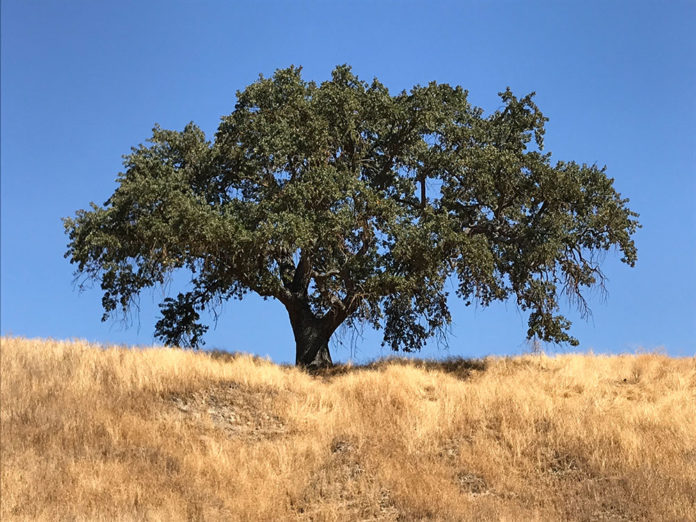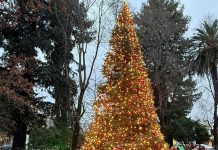I was so happy to see that the City of Healdsburg has given us a chance to suggest an official City flower, plant or tree as representative of Healdsburg. I was especially pleased to see that all of the options are California Native Plants. There are five different plants from which to choose, and the sixth option is a category which encompasses a variety of species of oak trees. There is also room to make our own suggestions on the online survey.
In the Oak Trees category, we are given the Blue Oak (Quercus douglasii), Coast Live Oak (Quercus agrifolia) and the Valley Oak (Quercus lobata). The City of Sacramento has designated the Blue Oak as its tree, which makes sense because the Blue Oak is the most common tree in the warmer interior (although we do have a ribbon of Blue Oaks along Alexander Valley Road and Chiquita Road.) The City of Windsor has designated the Coast Live Oak, called the Esposti Tree, as representative of their city. I voted for the Oak category, but I suggested that the Valley Oak be chosen as our tree.
These Oaks and many other California Native Plants make Sonoma County one of the most biologically diverse places in the United States, and the Valley Oak is a keystone, or anchor species, in this unique ecological Bioregion.
Over the course of 25 years I have observed a change in our natural landscape, and I am wondering if anyone else has noticed the number of mature Valley Oaks (Quercus lobata) in decline. After the recent harsh wind and heat about a month ago, some of my favorite trees turned to ghosts. Others show distress and are in decline, such as one of the two Oaks remaining in front of what was once “Los Robles” along Hwy 101 in Santa Rosa. When the asphalt parking lot was expanded near the majestic oaks, I wondered how long it would take for the trees to show the impact on their roots.
Other possible reasons for the decline of Valley Oaks may include: a lower groundwater table beyond where the tree roots reach; damage to the roots and root crown (where the roots meet the trunk of the tree) from soil compaction or burying the flare; pruning branches in the crown of the tree, especially during excessive heat (especially under power lines); cutting into the roots of the tree; and/or building nearby that changes drainage and overly saturates the soil.
Perhaps by identifying and recognizing Valley Oaks, we will learn to take better care of them and understand how their shade and beauty make a positive difference in our daily lives. The “robles” deserve our respect.
Mary Kelley, Healdsburg
HealdsburgGardenClub.org
Public input for the city survey will run until Wednesday, July 9, via an online survey, with descriptions of the nominated plants, at: healdsburg.gov/cityflowerplanttree.










Healdsburg should choose the orchid as its city flower. Orchids are expensive, have no roots, and live on organic detritus and animal droppings, but they sure are pretty.